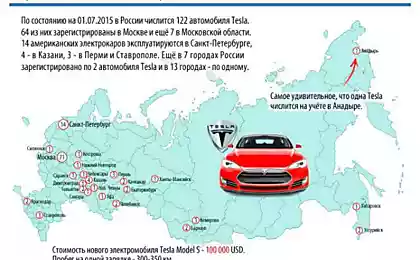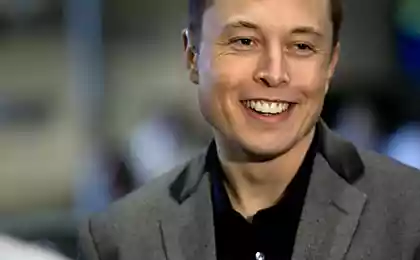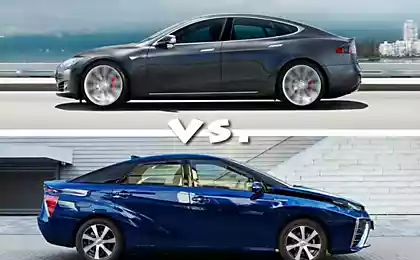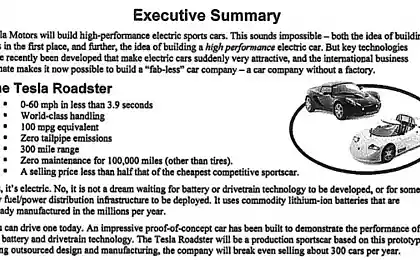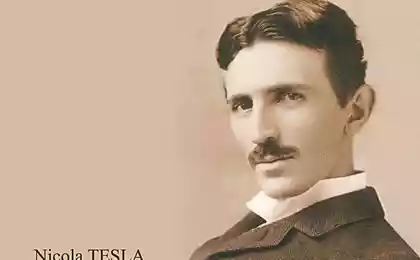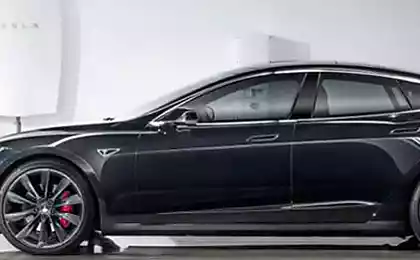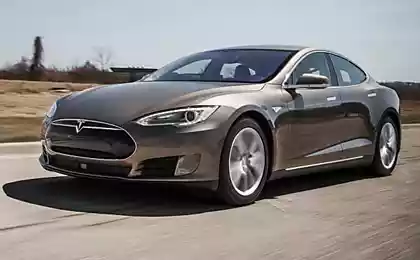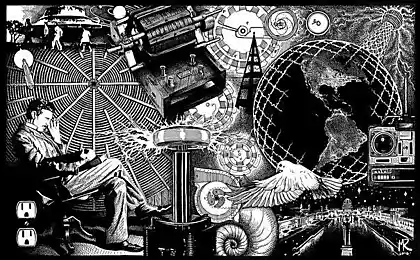663
Electric vehicles - why now?
In connection with the cancellation of the 19% duty on electric vehicles in Russia, interest in this segment of cars will surely rise. Especially when you consider that prior to the entry of benefits into effect, some interest has already been, and electric cars are bought. However, there is one pitfall.
If we look at the market for electric vehicles, while it is negligible. There is a car from Tesla (Model S), which in Russia is $150-$200 thousand, is Mitsubishi iMiev, for 1.8 million rubles, and is a prototype electric Lada Kalina, cost 1.5 million rubles. Will not call them mass. But the trend is interesting when you consider that in Moscow, for example, there are already several charging stations for electric cars with fast charging station.
I am personally in the history of the electric car is very much surprised by their age. What do you think, in what year was the first electric car? 1970? 1940? Can be 1920? No, no and no again. The first electric car was built, the first electric car in the form of a carriage with an electric motor was established in 1841. And if you think that truck is not the vehicle, remember the self-propelled carriages on a pair and petrol.
However, more and more. Electric car, La Jamais Contente on April 29 or may 1, 1899 set a speed record on land.

He was the first in the world overcome the speed of 100 km/h and reached a speed of 105,882 km/h. After that, Walter Baker got a speed of 130 km/h. as for the petrol engines, racing car DMG, built by the famous engineer Wilhelm Maybach in 1900, he developed mad at the time the speed of 75 km/h.
Battery life is also not inferior to the internal combustion engine. In 1895 the race was held, in which the petrol cars, had to cover 125 km. To overcome this distance the car took a couple of stops, and average speed of the winner was 24 km/h And the electric car company "Borland electric" traveled per charge of 167 km with an average speed of 55 km/h.
As you can see, the advantages of petrol engines was not at that time in principle. Yes, there were problems with the charging. But there were problems with dressing and refining of gasoline. And if you still think it was something from the category of amusements of individuals, here is another interesting fact — 1910 years in new York were about 70 thousand (!) electric taxi.
So why about an electric car that is remembered today and why the major car manufacturers began to invest in this type of transport? About the need to protect the environment, the world began in the 70-ies. On this theme expressed not only scientists, but also the most famous philosophers and public figures of the twentieth century — from Ron Hubbard and ending with the Dalai Lama. And one of the most common factors in the deterioration of the environment is carbon dioxide emissions, which are produced cars in large quantities.
As already described above — in 1910, electric vehicles were many and they were actively used. Perhaps, then, all decided the case, although I no longer believe, decided that all oil companies have achieved dominance of the structure of the network of petrol stations with petrol, the network of charging stations. Further more — in the 70's, enthusiasts and scientists have tried to revive the electric car, but they didn't work, as the automotive industry quickly adapted to the oil crisis, focusing on the efficiency of the engines.
But there was another moment in history that has not received adequate coverage, especially in our country. Today, the electric car Tesla Model S called revolutionary. Especially for his range of 350-500 km. of Course, compared to other offerings on the market is really a incomparable figure.
But overlooked the fact that in 1998 the concern General Motors issued EV1 electric car. It was the car in coupe, with a power reserve of 240 km (when the battery weight is several times less than the current Tesla Model S), which had a very good dynamic characteristics. However, his charge from the usual outlets took 10-12 hours.

The cost of the car also was not a space and $34,000. So this car has come a huge number of ordinary Americans that day bump in average 50 km Improvement to this car would likely lead to the fact that by 2005 GM had electric cars of all types and sizes, with a higher quality battery and good power reserve, and a more reasonable cost. Most likely, the infrastructure would have been developed to recharge the cars during long runs.
But this did not happen. And here's the weird thing — the project is not just "snapped" and the car doesn't just stopped selling. Initially, none of the hundreds of machines have been sold to buyers. They were given them in the lease. It is almost the same as the loan, with the only difference that the owner of the machine remains the selling party.
Thanks to this situation, the owners took the cars and then destroyed all but a few Museum pieces. No requests to leave the car, no offers from the owners to buy them back at a cost of twice the original price of failed.
In the movie "Who killed the electric car?", the authors came to the conclusion that this was due to pressure from oil companies and automakers who will lose a lot of money not only on gasoline but also on the maintenance of cars because the electric car is much lower than the cost of service and fewer parts that needs to be changed.
What has changed in 10 years? Why no one prevented Tesla bring your car to the list of best selling sedans of the US and outsell all other cars in Norway? Why no problems with the organisation of a network of "SuperServer" that they can charge your car to 80% in 30-40 minutes? Moreover, this network already today it is possible to drive from one coast to the other.
However, CIS is also not far behind. Inspired by the American electric vehicle, our engineers and inventors of the people began to convert regular cars to electric. And the cost of such alteration starts with a quite reasonable amount to several thousand dollars, which is quite quickly "bounces" savings on servicing such a vehicle.
As I said — I want to believe that the reason to care about the environment. But otherwise, I see only one reason: to build infrastructure and develop the technology necessary for the gradual transfer of the entire U.S. vehicle fleet to electric.
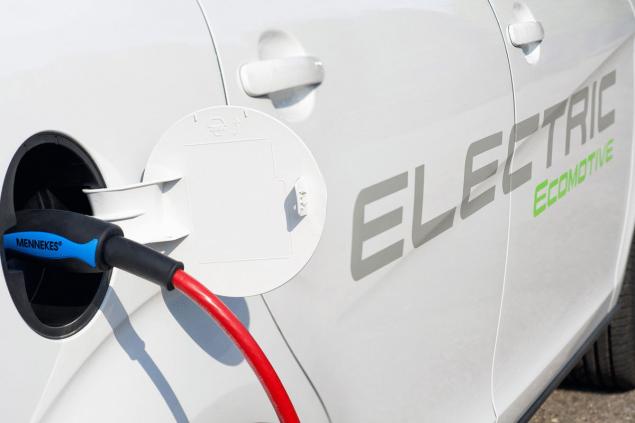
Given the available U.S. oil reserves, and the fact that the last few years they only increased the volume of imports of "black gold" a couple of years we may find ourselves in a situation where States no longer need this amount of fuel. If they will open their preserved deposits and refuse from import of oil (or at least reported the intention), the price is not it is the raw material collapse on the same day, in the best case 2-3 times. However, it is possible that is lowered to the level below $50 per barrel.
Economics which countries will suffer from this in the first place, I think no need to explain. This topic has raised popular Russian blogger Alexei Navalny in a recent article, "Great and awful". That's just his prediction about 10-20 years, in my opinion, not accurate. Charging stations in the United States is already a lot and in two years they will cover most of this small country. Will only release a few cheaper cars and gasoline consumption will decline.
Not that I called to impede progress or wanted to blame the company Tesla in the anti-Russian conspiracy. Not at all. Rather, I want to draw attention to the fact that now more than ever it is important to develop in our country the production is not associated with the oil and make it big enough and strong to relieve our economy from the oil and gas needle. Otherwise, once she is removed by force, "breaking" will be very painful.
Source: newsland.com
If we look at the market for electric vehicles, while it is negligible. There is a car from Tesla (Model S), which in Russia is $150-$200 thousand, is Mitsubishi iMiev, for 1.8 million rubles, and is a prototype electric Lada Kalina, cost 1.5 million rubles. Will not call them mass. But the trend is interesting when you consider that in Moscow, for example, there are already several charging stations for electric cars with fast charging station.
I am personally in the history of the electric car is very much surprised by their age. What do you think, in what year was the first electric car? 1970? 1940? Can be 1920? No, no and no again. The first electric car was built, the first electric car in the form of a carriage with an electric motor was established in 1841. And if you think that truck is not the vehicle, remember the self-propelled carriages on a pair and petrol.
However, more and more. Electric car, La Jamais Contente on April 29 or may 1, 1899 set a speed record on land.

He was the first in the world overcome the speed of 100 km/h and reached a speed of 105,882 km/h. After that, Walter Baker got a speed of 130 km/h. as for the petrol engines, racing car DMG, built by the famous engineer Wilhelm Maybach in 1900, he developed mad at the time the speed of 75 km/h.
Battery life is also not inferior to the internal combustion engine. In 1895 the race was held, in which the petrol cars, had to cover 125 km. To overcome this distance the car took a couple of stops, and average speed of the winner was 24 km/h And the electric car company "Borland electric" traveled per charge of 167 km with an average speed of 55 km/h.
As you can see, the advantages of petrol engines was not at that time in principle. Yes, there were problems with the charging. But there were problems with dressing and refining of gasoline. And if you still think it was something from the category of amusements of individuals, here is another interesting fact — 1910 years in new York were about 70 thousand (!) electric taxi.
So why about an electric car that is remembered today and why the major car manufacturers began to invest in this type of transport? About the need to protect the environment, the world began in the 70-ies. On this theme expressed not only scientists, but also the most famous philosophers and public figures of the twentieth century — from Ron Hubbard and ending with the Dalai Lama. And one of the most common factors in the deterioration of the environment is carbon dioxide emissions, which are produced cars in large quantities.
As already described above — in 1910, electric vehicles were many and they were actively used. Perhaps, then, all decided the case, although I no longer believe, decided that all oil companies have achieved dominance of the structure of the network of petrol stations with petrol, the network of charging stations. Further more — in the 70's, enthusiasts and scientists have tried to revive the electric car, but they didn't work, as the automotive industry quickly adapted to the oil crisis, focusing on the efficiency of the engines.
But there was another moment in history that has not received adequate coverage, especially in our country. Today, the electric car Tesla Model S called revolutionary. Especially for his range of 350-500 km. of Course, compared to other offerings on the market is really a incomparable figure.
But overlooked the fact that in 1998 the concern General Motors issued EV1 electric car. It was the car in coupe, with a power reserve of 240 km (when the battery weight is several times less than the current Tesla Model S), which had a very good dynamic characteristics. However, his charge from the usual outlets took 10-12 hours.

The cost of the car also was not a space and $34,000. So this car has come a huge number of ordinary Americans that day bump in average 50 km Improvement to this car would likely lead to the fact that by 2005 GM had electric cars of all types and sizes, with a higher quality battery and good power reserve, and a more reasonable cost. Most likely, the infrastructure would have been developed to recharge the cars during long runs.
But this did not happen. And here's the weird thing — the project is not just "snapped" and the car doesn't just stopped selling. Initially, none of the hundreds of machines have been sold to buyers. They were given them in the lease. It is almost the same as the loan, with the only difference that the owner of the machine remains the selling party.
Thanks to this situation, the owners took the cars and then destroyed all but a few Museum pieces. No requests to leave the car, no offers from the owners to buy them back at a cost of twice the original price of failed.
In the movie "Who killed the electric car?", the authors came to the conclusion that this was due to pressure from oil companies and automakers who will lose a lot of money not only on gasoline but also on the maintenance of cars because the electric car is much lower than the cost of service and fewer parts that needs to be changed.
What has changed in 10 years? Why no one prevented Tesla bring your car to the list of best selling sedans of the US and outsell all other cars in Norway? Why no problems with the organisation of a network of "SuperServer" that they can charge your car to 80% in 30-40 minutes? Moreover, this network already today it is possible to drive from one coast to the other.
However, CIS is also not far behind. Inspired by the American electric vehicle, our engineers and inventors of the people began to convert regular cars to electric. And the cost of such alteration starts with a quite reasonable amount to several thousand dollars, which is quite quickly "bounces" savings on servicing such a vehicle.
As I said — I want to believe that the reason to care about the environment. But otherwise, I see only one reason: to build infrastructure and develop the technology necessary for the gradual transfer of the entire U.S. vehicle fleet to electric.

Given the available U.S. oil reserves, and the fact that the last few years they only increased the volume of imports of "black gold" a couple of years we may find ourselves in a situation where States no longer need this amount of fuel. If they will open their preserved deposits and refuse from import of oil (or at least reported the intention), the price is not it is the raw material collapse on the same day, in the best case 2-3 times. However, it is possible that is lowered to the level below $50 per barrel.
Economics which countries will suffer from this in the first place, I think no need to explain. This topic has raised popular Russian blogger Alexei Navalny in a recent article, "Great and awful". That's just his prediction about 10-20 years, in my opinion, not accurate. Charging stations in the United States is already a lot and in two years they will cover most of this small country. Will only release a few cheaper cars and gasoline consumption will decline.
Not that I called to impede progress or wanted to blame the company Tesla in the anti-Russian conspiracy. Not at all. Rather, I want to draw attention to the fact that now more than ever it is important to develop in our country the production is not associated with the oil and make it big enough and strong to relieve our economy from the oil and gas needle. Otherwise, once she is removed by force, "breaking" will be very painful.
Source: newsland.com

